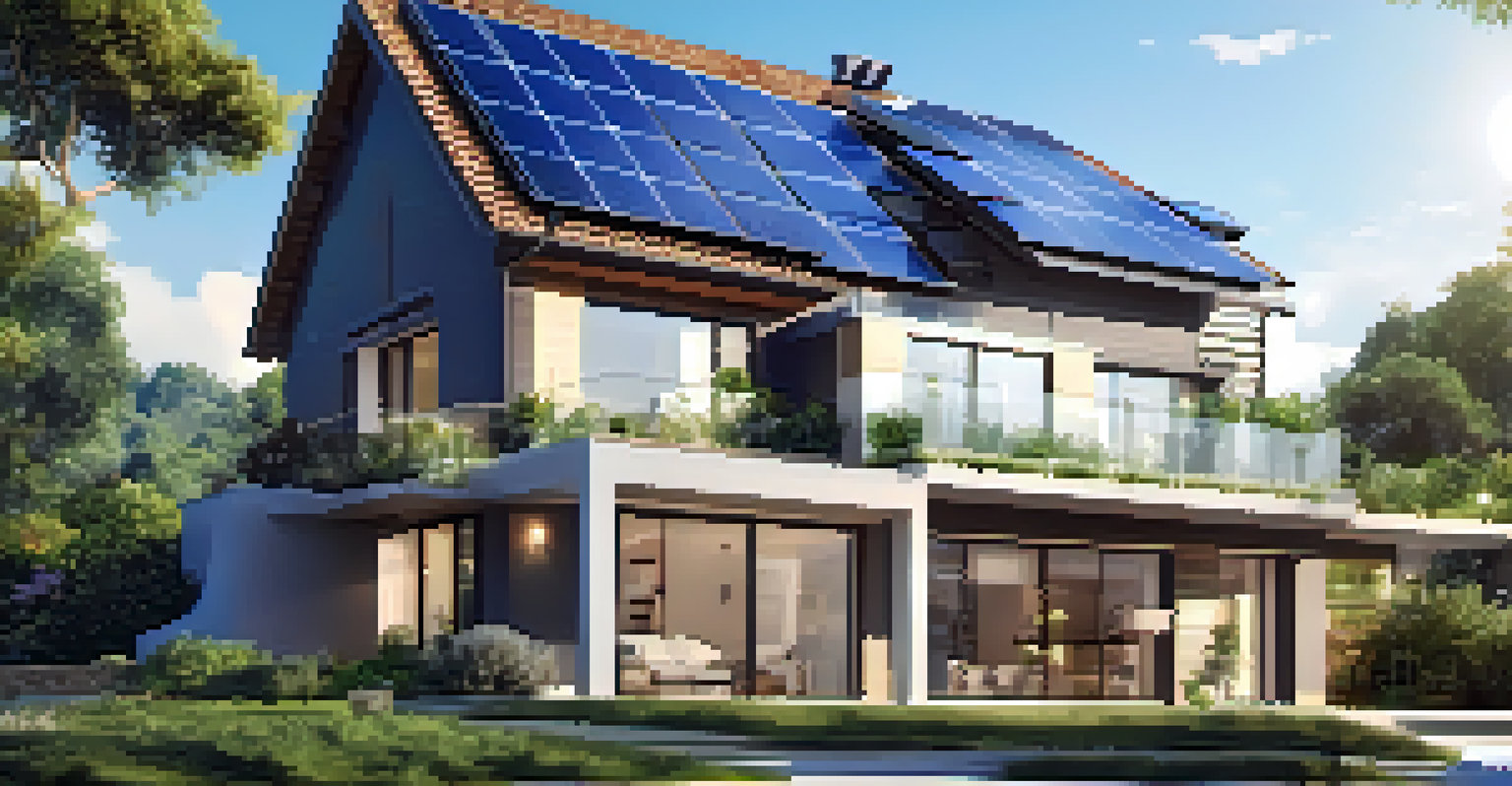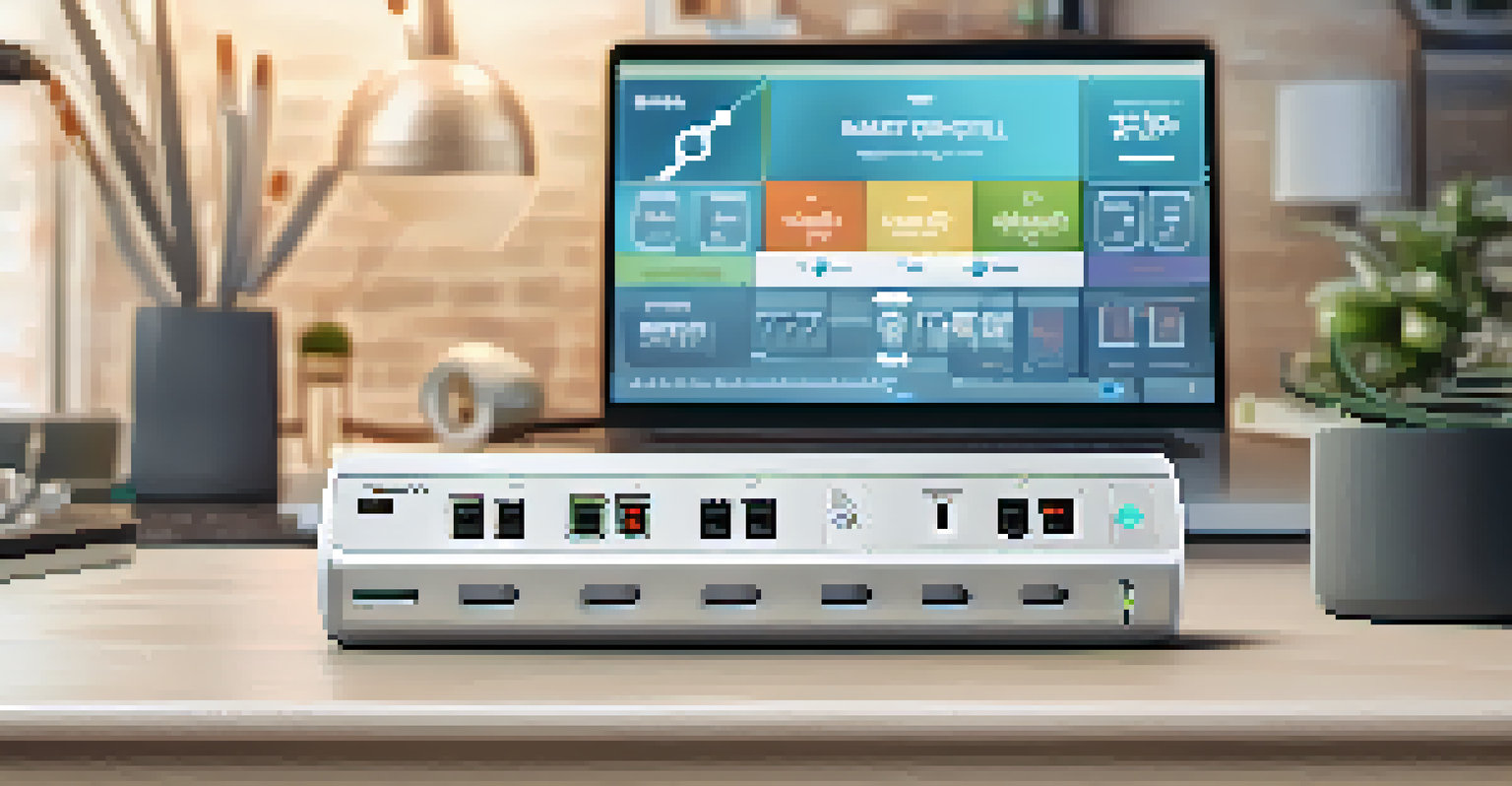The Impact of Home Automation on Energy Efficiency

Understanding Home Automation and Its Basics
Home automation refers to the use of technology to control various systems and devices within your home. Imagine being able to manage your lights, thermostat, and security system from your smartphone. This integration not only offers convenience but also fosters a more energy-efficient environment.
The greatest threat to our planet is the belief that someone else will save it.
The beauty of home automation lies in its ability to streamline multiple functions. For instance, smart thermostats can learn your schedule and adjust heating or cooling accordingly, minimizing energy waste. This means you can come home to a comfortable temperature without running the HVAC system all day.
Additionally, home automation systems often allow for remote access. This means you can turn off lights or adjust appliances even when you're miles away. Such features empower homeowners to make smarter energy choices, significantly reducing unnecessary consumption.
How Smart Thermostats Promote Energy Savings
Smart thermostats are among the most popular devices in home automation. They can adjust temperatures automatically based on your habits, ensuring that energy is not wasted when you’re not home. This can lead to significant savings on your monthly energy bill.

For example, if you typically leave for work at 8 AM and return at 6 PM, a smart thermostat can lower the temperature during your absence and warm it up just before you return. This proactive adjustment means your heating system works efficiently, rather than continuously battling to maintain a set temperature throughout the day.
Moreover, many smart thermostats provide data on your energy usage patterns. By understanding when and how you consume energy, you can make informed decisions to further enhance efficiency. This feedback loop encourages better habits and can contribute to significant long-term savings.
Energy-Efficient Lighting with Smart Technology
Lighting is another crucial area where home automation can shine—literally! Smart lighting systems allow you to control when and how your lights are used. Imagine having lights that turn off automatically when you leave a room or that adjust based on the time of day.
Energy efficiency is not just about saving energy; it's about saving money, improving productivity, and ensuring a sustainable future.
For instance, smart bulbs can be programmed to dim during daylight hours, utilizing natural light instead. This small adjustment can lead to a noticeable decrease in energy consumption. Plus, you can control these settings remotely, ensuring that you never leave lights on when you’re not home.
Furthermore, many smart lighting solutions can be integrated with motion sensors. This means lights only activate when someone is present, eliminating the common problem of forgotten lights left on. By adopting such systems, homeowners can enjoy a brighter, more efficient living space.
Smart Appliances and Their Energy Efficiency Benefits
Smart appliances are designed to use less energy while delivering higher performance. For example, a smart washing machine can determine the optimal water level and cycle time based on the load size. This not only conserves water but also saves energy by avoiding unnecessary cycles.
Many smart appliances also provide real-time data on energy usage, allowing homeowners to track consumption and identify patterns. This transparency can lead to smarter decisions, such as running the dishwasher during off-peak hours when energy rates are lower.
Additionally, some appliances can be controlled remotely, enabling you to turn them off or adjust settings while you're away. This feature ensures that you’re not wasting energy on unneeded tasks, ultimately leading to lower bills and a reduced carbon footprint.
The Role of Smart Power Strips in Energy Management
Smart power strips are an often-overlooked component of home automation. They help manage energy consumption by cutting off power to devices that are not in use. For example, when you turn off your TV, the smart strip can automatically power down all connected devices, reducing phantom energy draw.
Phantom energy refers to the energy consumed by electronics when they are in standby mode. This can account for a significant portion of your energy bill. By using smart power strips, you effectively eliminate this waste, making your home more energy-efficient without sacrificing convenience.
Many smart strips also come with scheduling features, allowing you to set timers for when devices should turn on and off. This means you can ensure that energy-intensive devices are only active when needed, further enhancing your home’s overall efficiency.
Monitoring Energy Usage with Smart Home Systems
One of the most powerful aspects of home automation is the ability to monitor energy usage in real-time. Smart home systems can provide insights into how much energy each device consumes, enabling you to identify areas for improvement. It’s like having a personal energy coach right in your home!
For instance, if you notice that a particular appliance is using more energy than expected, you can take steps to reduce its usage or replace it with a more efficient model. This proactive approach can lead to substantial savings over time.
Moreover, many smart home systems allow for alerts and notifications. If an appliance is consuming an unusually high amount of energy, you can be alerted immediately. This feature helps prevent costly surprises on your energy bill and keeps you informed about your home’s energy health.
The Environmental Impact of Home Automation
Beyond personal savings, home automation plays a vital role in promoting environmental sustainability. By reducing energy consumption, smart technologies contribute to lower greenhouse gas emissions. This means that as more households adopt these systems, the collective impact can be significant.
For example, widespread use of smart thermostats and energy-efficient appliances can lead to a noticeable decrease in overall energy demand. This, in turn, reduces the strain on power plants, many of which rely on fossil fuels that contribute to climate change.

Moreover, many smart home devices are designed to work with renewable energy sources. For instance, homeowners with solar panels can use smart systems to optimize energy use when production is highest. This synergy not only benefits individual homeowners but also supports a larger shift towards renewable energy.
The Future of Home Automation and Energy Efficiency
As technology continues to evolve, the potential for home automation to enhance energy efficiency will only grow. Future innovations may lead to even smarter systems that can anticipate user needs and adjust energy use accordingly. Imagine a home that learns your preferences and optimizes itself for maximum efficiency without you lifting a finger.
Additionally, as more people become aware of environmental issues, the demand for energy-efficient solutions is likely to increase. This trend may drive manufacturers to create even more advanced automation technologies, making it easier and more affordable for homeowners to adopt these systems.
In conclusion, the future is bright for home automation and energy efficiency. By embracing these technologies, homeowners can enjoy significant savings while contributing to a healthier planet. It’s an exciting time to be part of the movement towards smarter, greener living.